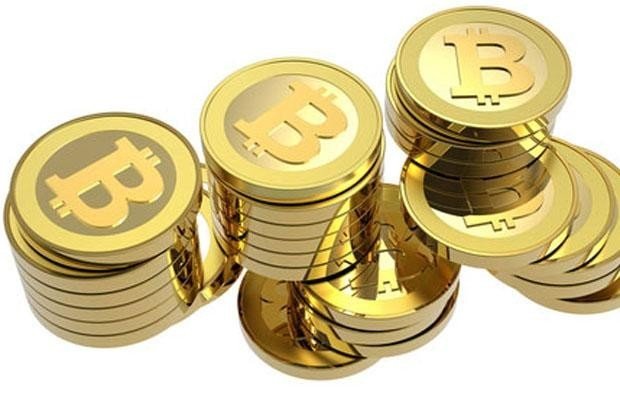Why Is Everyone Investing In Bitcoin?
There’s a great story being told over and over around the web. It’s the story of the 10,000 Bitcoin pizzas. In May 2010, one Bitcoin was worth less than a penny. A forum user, Laszlo Hanyecz, made the first ever real-world transaction: he bought 2 pizzas for 10,000 Bitcoin.
If you recall today’s prices, ranging anywhere from $1,000 to $20,000 in the past year, that dude paid between $10 and $200 million for two pizzas. It’s easy to consider this a foolish investment now, of course, but eight years ago no one could possibly know what Bitcoin would become. Maybe, if it wasn’t for people like Laszlo, we never would’ve gotten here. However, given Bitcoin’s meteoric rise, especially in 2017, many people now look at its astronomical price and think it’s too late to get involved.
Bitcoin’s price through 2017.
The problem here, as most human problems, is mainly a psychological one. So let’s walk through the thought process and mental obstacles most, if not all people, encounter before they first decide to invest into Bitcoin.
Three Types Of Bitcoin Bias
I like to think of cognitive biases as raindrops on your mental windshield. A few won’t cloud your vision too much, but once it’s full, you better turn on the wipers. When it comes to Bitcoin pre-ownership, there are three in particular that mess with your mind.
- Unit Bias
This is our tendency to want to measure things by whatever metric the world gives us for them. Originally discovered in a study about food intake, what it means is that you’d rather eat one burger than half a burger, even if both should work out to 250g of meat.
For Bitcoin, stocks, gold, or any other investment, we gauge how expensive the asset is based on how much each unit costs. “One Bitcoin costs $8,000? I don’t have that kinda money!” Even for those who have the money, owning two, three, even ten Bitcoin doesn’t feel as powerful as owning a million of something else with a smaller price.
This is nonsense, of course. Bitcoin is divisible up to eight points after the decimal, potentially more, if need be. But we don’t want 0.00000001 BTC. We want one.
- Probability Neglect
Another tendency we have is to only respond to the magnitude of an event, not its likelihood. We estimate the size of the risk or the reward, but don’t factor in probability. As a result, we don’t judge based on expected value, as good poker players, investors, and traders do, but by the severity of the threat or the joy of the upside.
This makes the chances of losing all our money look bigger than they are. Combined with unit bias, it also makes it harder to see how the price of one Bitcoin could possibly go up more. In reality, the two aren’t related. How bad it is to lose $1,000 or $10,000 is subjective, but calculating the probability of that happening is another task altogether.
- Endowment Effect
An investor’s worst enemy is impatience. But, once we own an asset, we expect it to go up in value immediately, simply because it’s ours. On the other hand, we’re rarely willing to pay the current market price for something, because, well, it’s not ours yet!
The researcher who originally studied this phenomenon, Daniel Kahneman, gave half his students mugs, and then asked all of them how much they’d be willing to buy or sell the mugs for. Those who had mugs quoted prices about twice as high as what those without mugs were willing to pay for them.
So if Bitcoin is at $10,000, a good rule of thumb is that you tell yourself “I’d buy it at $5,000,” but at the same time, if you had one, you wouldn’t let it go for less than $20,000.
There are as many variants to this process as there are people, but these elements strike me as common and they definitely got to me. So why did I and millions of others change our minds?
A Chronology Of Bitcoin Price Predictions
Giving in to biases doesn’t mean we don’t doubt them. First and foremost, there’s FOMO, the fear of missing out, as we see others making money — or at least claiming to — left and right. The space provides many opportunities to make a fortune beyond investing. Naturally, we’re scared to be left in the dust.
But one of the main factors that keeps eating at us as we follow the news more and more is that time and again, reputable people stick out their neck to make bold price predictions for Bitcoin. This trend really caught fire when, in July 2017, the infamous John McAfee predicted Bitcoin to land at $500,000 within three years.
He later updated this to $1,000,000 by the end of 2020. McAfee is a lose cannon, to put it bluntly, but even more conservative folks don’t shy away. Like Mike Novogratz, former billionaire and crypto fund manager, who correctly predicted Bitcoin going to $10,000 in 2017:
“I’m pretty confident to say it’s going higher…It would not surprise me if in the next 6–10 months we are over $10,000.” — Mike Novogratz, Oct 10th, 2017
He then doubled down and said it could go to $40,000 by the end of 2018. The former VP of JPMorgan Chase, who was a Wall Street trader for 10 years, Tone Vays, sees the long-term price potential at $100,000 per coin. Thomas Lee, who served as J.P. Morgan’s Chief Equity Strategist from 2007 to 2014, puts the price around $20,000 by 2022, with room up to $50,000. The list goes on and on.
Of course we have no clue if any single one of these is right and there are some biases in crowd predictions too, but the more predictions you see, the larger the question in your head gets:
How likely is it that every one of them is wrong?
Oh Holy Context, Where Art Thou?
I don’t know anything. Bitcoin could go to $0 tomorrow, for all I know. What I do know is that making good decisions requires lots of context. This is where psychology hits its limits. Context is the environment of facts surrounding your subjective opinion. And there’s nothing more factual than math.
Right now, 10–20 million people are haggling over 17 million Bitcoins. Because of how the system works, only 21 million Bitcoins will ever be created. Ever. The global population is about 7.6 billion people right now
and it’s growing. Fast.
Source
If all Bitcoin does is stay around, supply and demand dictate that the price, in the long run, should go up.
That’s a big if, but the math that backs it pierces a potential first-time investor’s doubts because it’s simple, yet sound. Another valuable piece of context comes from placing Bitcoin and cryptocurrencies against other asset classes as a whole.
The global market for gold is around $6-$8 trillion. Placing not just Bitcoin, but the whole crypto asset class inside it makes the new kid on the block look like a drop in the bucket.
Yes, the size relation is accurate. Calculated for a $200B total crypto market cap back in November.
Even at its height, the speculative crypto market barely topped the capitalization of Apple, a huge company, but still just one company.
None of these data points are guarantees Bitcoin will be a good investment, but to a stressed potential investor, the math makes it easy to argue psychology into the ground.
There are many ways to spin the math so that it works out. There are few ways to spin the math so it doesn’t.
Putting It All Together
To recap, potential investors into Bitcoin are initially held back by three biases. The fear of missing a big opportunity along with a plethora of price predictions, among other things, gets them to doubt these biases. Furthermore, the mathematical context around Bitcoin is simple and convincing, which is what gets many to ultimately pull the trigger.
Once you spend some time in the space, you’ll notice most arguments against Bitcoin are based in psychology too. They make points around ethics, security, and convenience, like “if people stop believing in it, it will be worth zero.” But that’s just as true of the US dollar or any other currency. So while a lot of these arguments are universal, they also quickly lose steam if probed for facts.
There are some more rational, fact-based ones as well, like transaction costs, excessive energy use, and governance issues, but few of them dare to go near the math around the price, because, well, it checks out. Will there be huge ups and downs, booms and busts along the way? Absolutely. But probability-wise, it might not be the stupidest idea for millennials to focus some, maybe even a lot of their retirement planning around crypto investments, not stocks.
It is and likely will be the biggest growth sector for private investments for years to come. More people, more biases, more predictions, more believers. Like the 10,000 Bitcoin Laszlo paid for his pizzas, it’s only the math that will stay the same.

